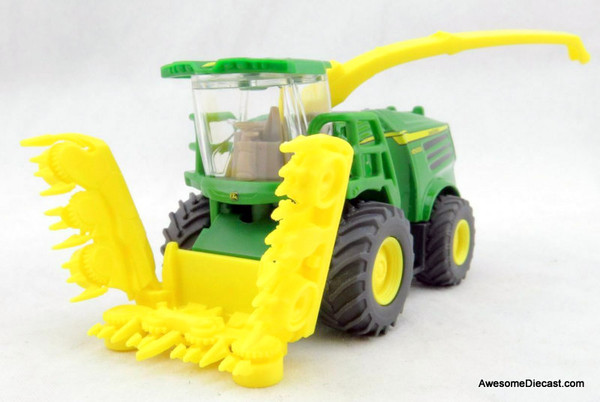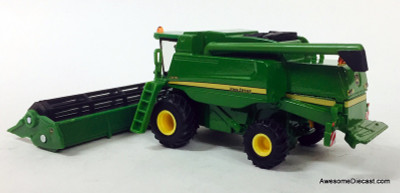Siku
SIKU 1:87 John Deere 8500i Forage Harvester

SIKU 1:87 John Deere 8500i Forage Harvester
$41.01
The modern combined harvester, or simply combine, is a versatile machine designed to efficiently harvest a variety of grain crops. The name derives from its combining four separate harvesting operations—reaping, threshing, gathering, and winnowing—into a single process. Among the crops harvested with a combine are wheat, rice, oats, rye, barley, corn (maize), sorghum, soybeans, flax (linseed), sunflowers and canola. The separated straw, left lying on the field, comprises the stems and any remaining leaves of the crop with limited nutrients left in it: the straw is then either chopped, spread on the field and ploughed back in or baled for bedding and limited-feed for livestock.
Combine harvesters are one of the most economically important labour saving inventions, significantly reducing the fraction of the population engaged in agriculture.
In 1826 in Scotland, the inventor Reverend Patrick Bell designed (but did not patent) a reaper machine, which used the scissors principle of plant cutting – a principle that is still used today. The Bell machine was pushed by horses. A few Bell machines were available in the United States. In 1835, in the United States, Hiram Moore built and patented the first combine harvester, which was capable of reaping, threshing and winnowing cereal grain. Early versions were pulled by horse, mule or ox teams. In 1835, Moore built a full-scale version with a length of 5.2 m (17 ft) and a cut width of 4.57 m (15 ft); by 1839, over 20 ha (50 acres) of crops were harvested. This combine harvester was pulled by 20 horses fully handled by farmhands. By 1860, combine harvesters with a cutting, or swathe, width of several metres were used on American farms.
A parallel development in Australia saw the development of the stripper based on the Gallic stripper, by John Ridley and others in South Australia by 1843. The stripper only gathered the heads, leaving the stems in the field. The stripper and later headers had the advantage of fewer moving parts and only collecting heads, requiring less power to operate. Refinements by Hugh Victor McKay produced a commercially successful combine harvester in 1885, the Sunshine Header-Harvester.






















